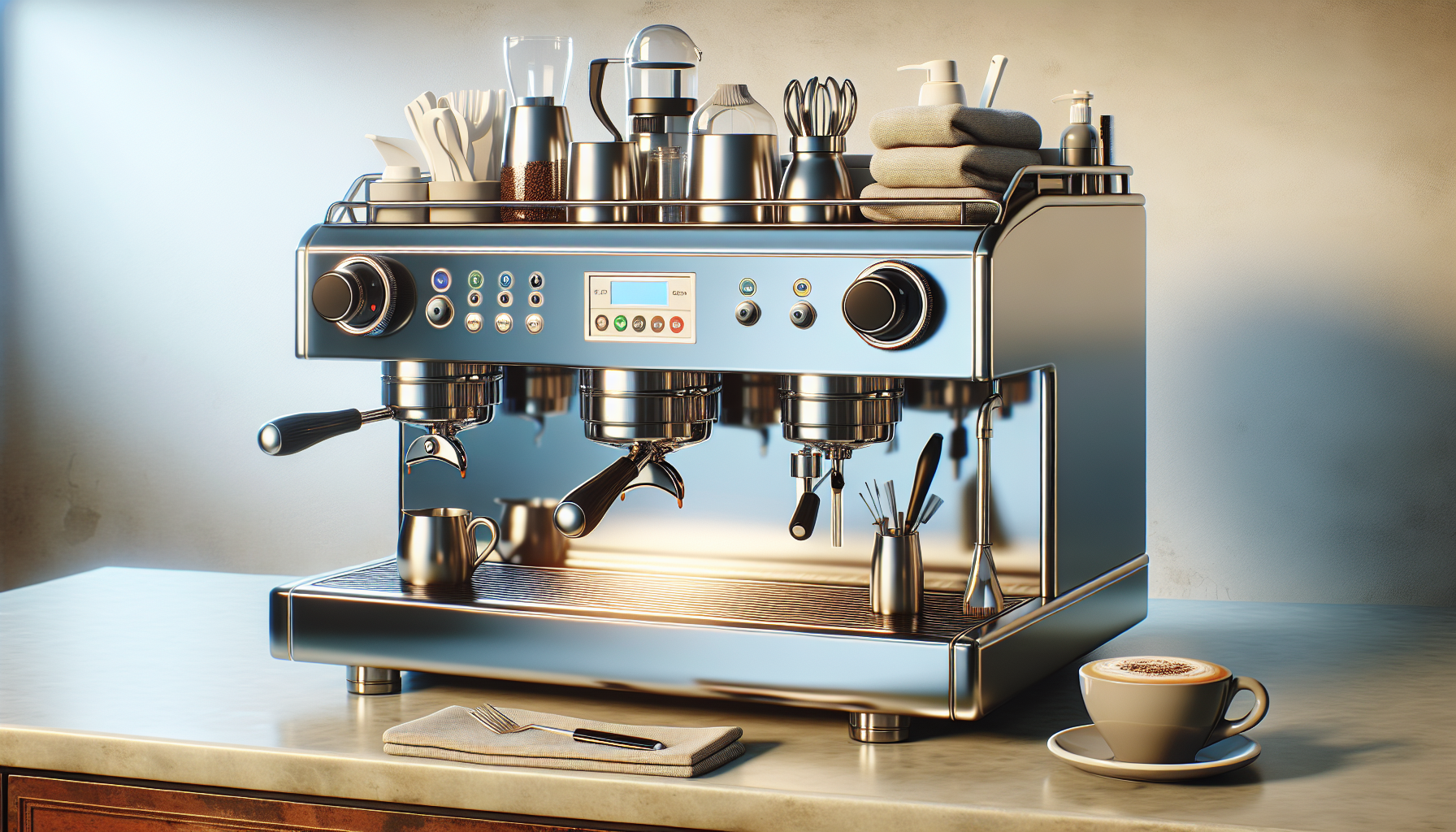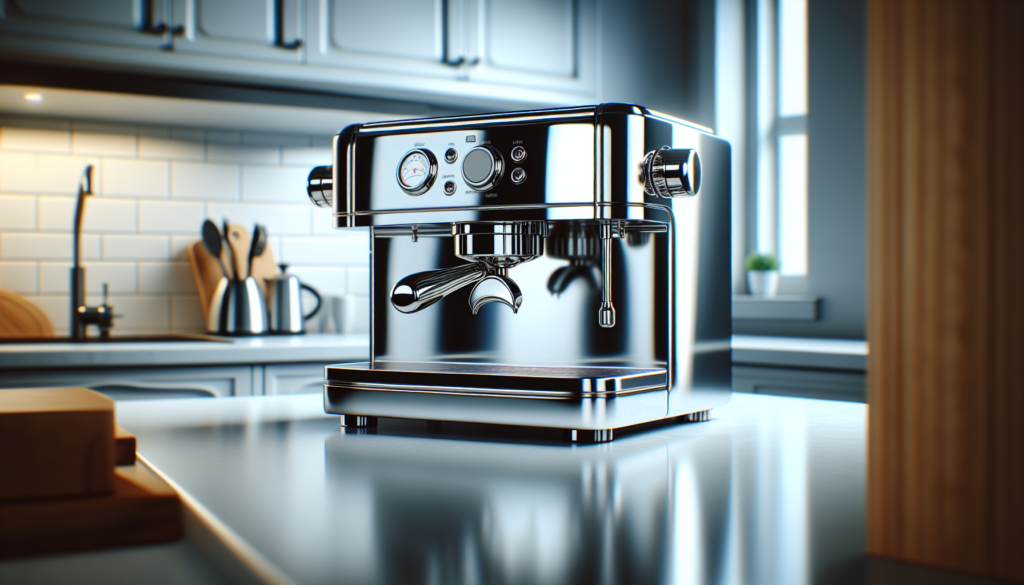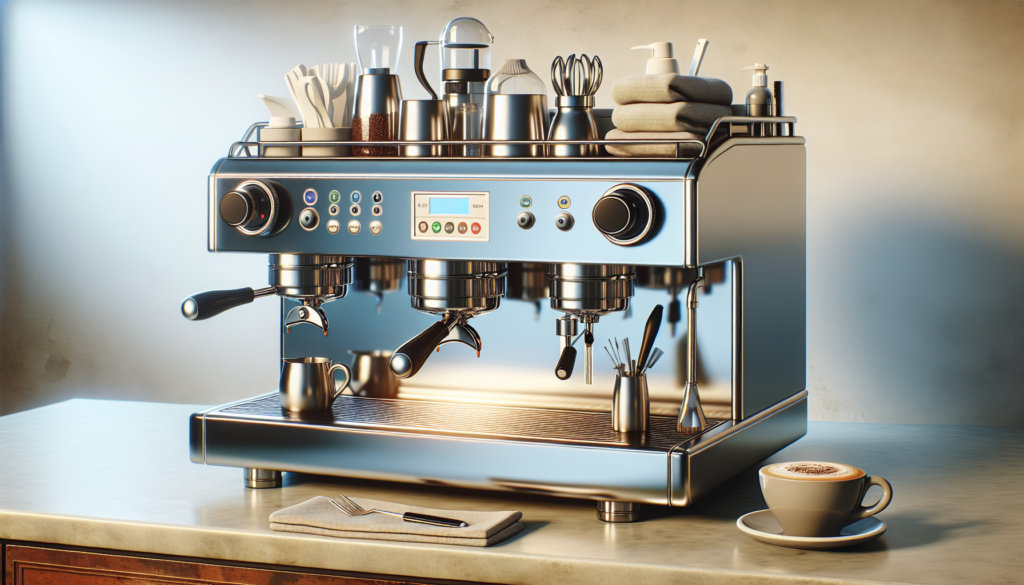
So you’ve invested in a beautiful stainless steel espresso machine, and you want to ensure it lasts for years to come. Taking proper care of your espresso machine is essential to maintain its performance and longevity. In this article, we will explore the best practices for maintaining your stainless steel espresso machine, from regular cleaning routines to troubleshooting common issues. By following these tips, you’ll be able to enjoy delicious, barista-quality espresso in the comfort of your own home for years to come.

Choosing the Right Espresso Machine
When it comes to choosing the right espresso machine, there are a few factors to consider. The first is the material of the machine itself. While there are various materials available, stainless steel is the top choice for durability and longevity. Stainless steel is resistant to rust and corrosion, making it a great option for a long-lasting espresso machine.
In addition to the material, it is important to check the construction quality of the espresso machine. Look for solid and sturdy construction, with minimal plastic parts. This will ensure that your machine can withstand daily use and maintain its performance over time.
Proper Cleaning and Maintenance
Proper cleaning and maintenance are essential for keeping your stainless steel espresso machine in the best possible condition. Establishing a daily cleaning routine is a good place to start. After each use, wipe down the exterior of the machine and remove any coffee grounds or residue from the portafilter and brew group. This will prevent build-up and keep your machine clean and hygienic.
Regular descaling is also important to remove mineral deposits from the internal components of the machine. Use a descaling solution specifically designed for espresso machines and follow the instructions provided by the manufacturer. This will help prolong the life of your machine and ensure optimal performance.
Cleaning the portafilter and brew group is another crucial step in maintaining your espresso machine. Remove the portafilter and clean it thoroughly with warm water and a gentle brush. Pay attention to the small holes in the filter basket to ensure proper extraction. Similarly, the brew group should be cleaned using a specific brush or tool designed for this purpose.
Lastly, handle the steam wand with care. After each use, wipe it clean and purge any remaining steam. This will prevent milk residue from accumulating and keep the wand functioning properly.
Water Quality
Water quality plays a significant role in the taste and performance of your espresso machine. It is recommended to use filtered water to avoid any impurities that may affect the flavor of your coffee. A water filter will remove chlorine, minerals, and other contaminants, ensuring a clean and pure brew.
When it comes to choosing the water for your espresso machine, it is best to avoid using hard water. Hard water contains high levels of minerals, such as calcium and magnesium, which can build up inside the machine over time. This can lead to clogs and affect the overall performance of your espresso machine. Opting for soft or filtered water will help prevent these issues and prolong the lifespan of your machine.
Appropriate Grinding
Investing in a good grinder is essential for achieving the perfect espresso shot. The grinder you choose should have a consistent and uniform grind size, as this is crucial for extracting the flavors from the coffee beans.
Grind size and consistency are key factors in brewing a great cup of espresso. Too fine of a grind can result in over-extraction and a bitter taste, while too coarse of a grind can lead to under-extraction and a weak flavor. Experiment with different grind settings to find the perfect balance for your taste preferences.

Dosing and Tamping
Dosing and tamping are important steps in the espresso-making process. Using freshly ground coffee is highly recommended for the best flavor. Coffee begins to lose its freshness and aroma shortly after grinding, so grinding your beans just before brewing will result in a better-tasting cup of espresso.
Proper dosing is crucial to ensure the correct amount of coffee is used. This will vary depending on the size of your portafilter, but a general rule of thumb is to aim for a dose that fills the basket evenly without overpacking or leaving gaps. Consistency is key when it comes to dosing, so make sure to measure and adjust as needed.
Tamping is the next step after dosing. This involves compacting the coffee grounds in the portafilter to create an even surface for proper water flow. Use a tamper that fits snugly in the portafilter and apply consistent pressure when tamping. This will help create an evenly extracted shot of espresso.
Correct Brewing Technique
To ensure the best possible espresso extraction, it is important to follow the correct brewing technique. Preheating the machine is the first step in this process. Allow your espresso machine to heat up adequately before brewing to ensure the water reaches the optimal temperature. This will result in a better extraction and a fuller-bodied espresso.
Brewing at the right temperature is crucial for achieving the perfect espresso shot. The ideal temperature range is typically between 195°F and 205°F (90°C and 96°C). Different espresso machines may have specific temperature settings, so refer to your machine’s manual for guidance.
Maintaining proper pressure during the brewing process is also important. The water should flow through the coffee grounds at a steady rate to ensure even extraction. Too much pressure can result in a bitter taste, while too little pressure can lead to a weak espresso. Pay attention to the flow rate and adjust as needed.
Monitoring extraction time is another key aspect of correct brewing technique. The extraction time refers to the length of time it takes for the espresso to be extracted from the coffee grounds. This can vary depending on the desired taste and strength of the espresso. Aim for a total extraction time of around 25 to 30 seconds for a balanced and flavorful shot.
Regular Equipment Inspections
Regular equipment inspections are necessary to identify any potential issues with your espresso machine. Check for leaks regularly, as even small drips can indicate a problem. Inspect gaskets and seals for wear and tear, as these can affect the machine’s performance. Replace any damaged or worn-out gaskets to ensure a proper seal.
Ensure proper calibration of your espresso machine by checking the temperature, pressure, and other settings. Refer to your machine’s manual for instructions on how to calibrate or adjust these settings. Incorrect calibration can result in inconsistent espresso quality, so it is important to regularly check and make any necessary adjustments.
Examine electrical components for any signs of damage or malfunction. Check cords, plugs, and switches to ensure they are in good condition. Any frayed wires or loose connections should be addressed immediately to avoid any safety hazards.
Scheduled Maintenance
In addition to regular inspections, it is important to follow the manufacturer’s guidelines for scheduled maintenance. Each espresso machine has specific recommendations for maintenance intervals, such as replacing certain parts or cleaning specific components. Be sure to keep track of these maintenance tasks and follow them accordingly.
Regular maintenance can help prevent major issues and prolong the lifespan of your espresso machine. It is also a good idea to schedule professional servicing at regular intervals. This will allow an experienced technician to thoroughly clean and inspect your machine, ensuring optimal performance and addressing any potential problems.
Avoiding Common Mistakes
Avoiding common mistakes can help ensure the longevity of your espresso machine. One common mistake is leaving the machine on for extended periods when not in use. This can put unnecessary strain on the machine and may lead to overheating or other issues. Make it a habit to turn off the espresso machine when not in use to conserve energy and prolong its lifespan.
Another mistake to avoid is dry boiling. This occurs when the water reservoir is empty, but the machine is still turned on and attempts to produce steam. This can cause damage to the heating elements and other internal components. Always ensure there is enough water in the reservoir before turning on the machine.
Overloading the machine with too much coffee or water can also be a common mistake. Follow the recommended dosage and water capacity for your specific espresso machine to avoid any strain on the motor or other components.
Finally, refrain from using abrasive cleaners on your espresso machine. Certain chemicals and cleaning agents can damage the stainless steel surface or other parts of the machine. Stick to gentle and non-abrasive cleaning methods to keep your machine looking pristine.
Storing the Espresso Machine
Proper storage of your espresso machine is important to protect it from damage and ensure its longevity. After each use, empty the water reservoir to prevent any stagnant water from causing issues. This will help prevent the growth of bacteria and keep the internal components clean.
When storing your espresso machine, choose a dry and dust-free area. Moisture and dust can accumulate over time and affect the performance of your machine. Keep it covered or store it in a cabinet to protect it from any potential damage.
By following these best practices for a long-lasting stainless steel espresso machine, you can enjoy delicious cups of espresso for years to come. Proper care, regular maintenance, and attention to detail will ensure that your machine stays in optimal condition, providing you with the perfect cup of espresso every time.